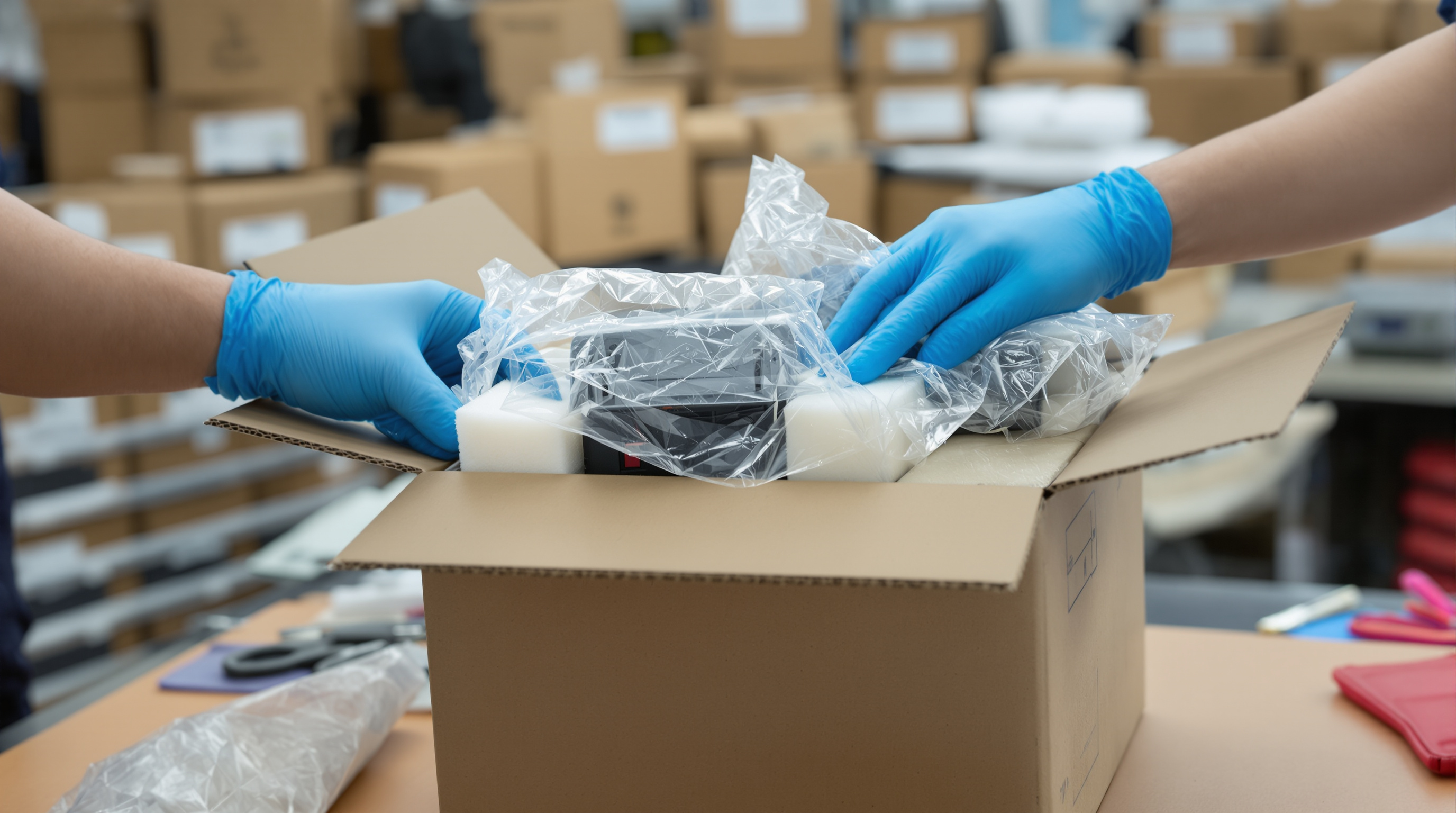
6 Safe Packing Tips for Electronics
Electronic devices contain sensitive components vulnerable to physical shock, static discharge, moisture, and temperature extremes. Proper packing techniques protect valuable electronics during shipping, moving, or storage. Whether you're relocating computer equipment, shipping products to customers, or storing seasonal devices, these guidelines ensure safe handling.
1. Use Anti-Static Protection for Sensitive Components
Static electricity can damage sensitive electronic components, particularly semiconductors. Circuit boards, memory modules, and expansion cards require anti-static protection during handling and packing. Anti-static bags create Faraday cage effects that prevent external electrical charges from reaching enclosed devices.
According to the ESD Association, electrostatic discharge causes billions of dollars in electronics damage annually, much of it preventable through proper handling procedures. For valuable or sensitive electronics, invest in proper anti-static bags or packaging materials rather than using standard plastic bags that can generate static charges.
When handling circuit boards or components, touch grounded metal objects first to discharge any static buildup on your body. Work on anti-static mats if available and avoid wearing materials that generate significant static electricity.
2. Protect Against Physical Shock with Proper Cushioning
Electronic devices contain delicate components including circuit boards, displays, hard drives, and solder joints that can crack or fail from impact. Adequate cushioning material around all sides of devices absorbs shock and prevents damage during handling.
Use bubble wrap, foam inserts, or air pillows to create protective barriers. The cushioning should prevent the device from contacting box walls even if the package is dropped. For especially fragile items like monitors or laptops, double-boxing (placing the cushioned device in a box, then placing that box in a larger box with additional cushioning) provides extra protection.
Hard drives deserve special attention during packing. While modern solid-state drives tolerate physical shock well, traditional spinning hard drives contain precision mechanical components easily damaged by impact. If possible, remove hard drives from computers before moving and pack them separately with extra protection.
3. Remove Batteries When Possible
Batteries pose several risks during packing and shipping. Lithium-ion batteries can short-circuit if terminals contact metal objects, potentially causing fires. Temperature extremes during shipping can damage batteries or cause leakage in certain battery chemistries.
When practical, remove batteries from devices before packing. This reduces weight, eliminates fire risk, and prevents potential battery leakage from damaging electronics. Store removed batteries separately, ensuring terminals are insulated (cover with tape or use original packaging).
For devices with non-removable batteries (many modern laptops, tablets, phones), research shipping regulations. Some carriers have restrictions on lithium battery shipments, particularly for air transport. Ensure power switches are off and devices won't accidentally activate during shipping.
4. Protect Connectors, Ports, and Moving Parts
Connectors and ports represent vulnerable points on electronic devices. Damaged USB ports, broken HDMI connectors, or bent pins can render otherwise functional devices unusable. Similarly, moving parts like laptop hinges, drive doors, and expansion slots need protection.
For desktop computers, consider removing expansion cards before moving to prevent them from working loose or breaking. Secure any swing-out panels or doors with tape. For devices with multiple cables, photograph connections before disassembly to simplify reassembly.
Port protectors or dummy plugs can shield delicate connectors during packing. Alternatively, fill port openings with soft material to prevent foreign objects from entering or connectors from being damaged by pressure.
5. Control Moisture and Humidity
Moisture can corrode electronic connections, damage circuit boards, and cause short circuits when devices are powered on. Electronics being shipped or stored long-term benefit from moisture control measures, particularly in humid climates or during seasonal temperature changes.
Desiccant packets absorb moisture inside sealed packages. Include several packets appropriate for your package size, positioning them near (but not touching) electronics. Silica gel and clay desiccants are widely available and inexpensive insurance against moisture damage.
Avoid packing electronics when they're cold (moving from cold storage into warm packing areas), as condensation can form on cold surfaces. Allow devices to reach room temperature before packing. Similarly, if electronics have been in cold environments during shipping, allow them to warm gradually before powering them on.
6. Label Packages Appropriately and Document Contents
Clear labeling helps ensure proper handling during shipping or moving. "Fragile" labels alert handlers to exercise care, while "This Side Up" indicators ensure correct orientation for devices sensitive to positioning. "Keep Dry" labels emphasize moisture sensitivity.
Document package contents, including device model numbers, serial numbers, and included accessories. This documentation proves invaluable for insurance claims if damage occurs and helps verify nothing is missing during unpacking. Photographs of devices before packing provide visual records of pre-shipping condition.
For valuable electronics, consider purchasing shipping insurance beyond carriers' standard liability limits. The modest insurance cost provides significant protection for expensive equipment. Review carriers' policies regarding electronics – some exclude or limit coverage for certain device types.
Additional Considerations for Professional Shipping
Businesses shipping electronics to customers should develop standardized packing procedures ensuring consistent protection. Use quality packaging materials – cheap materials often fail to provide adequate protection, leading to returns, replacements, and damaged reputation.
For products you manufacture, design packaging specifically for your devices rather than using generic boxes and hoping for the best. Custom foam inserts, molded pulp packaging, or die-cut cardboard ensure optimal protection while presenting professional appearance.
Test your packaging by conducting drop tests from heights matching shipping scenarios (typically 30-36 inches for parcel shipments). This validates that your packing methods actually protect devices under realistic conditions rather than hoping they'll arrive safely.
Our experience in the electronics industry provides perspective on component protection and handling. For information about electronic components and the markets we serve, visit our product lines page.